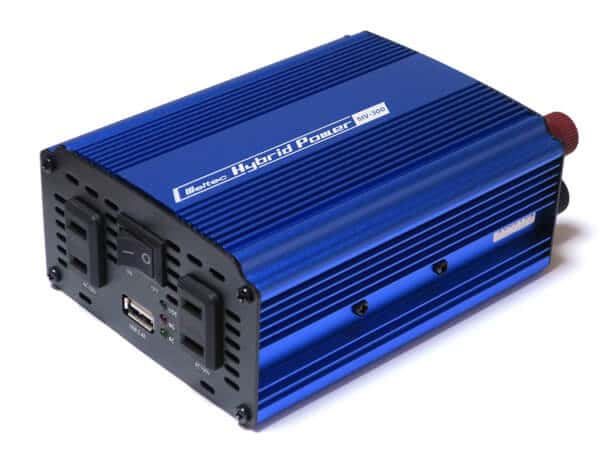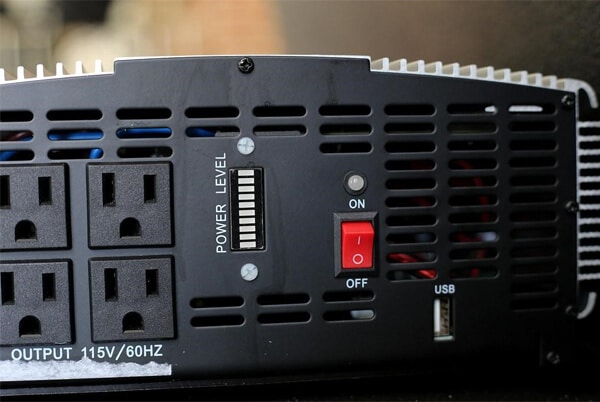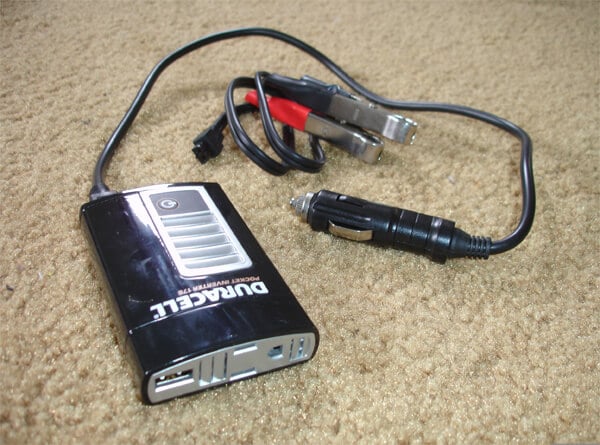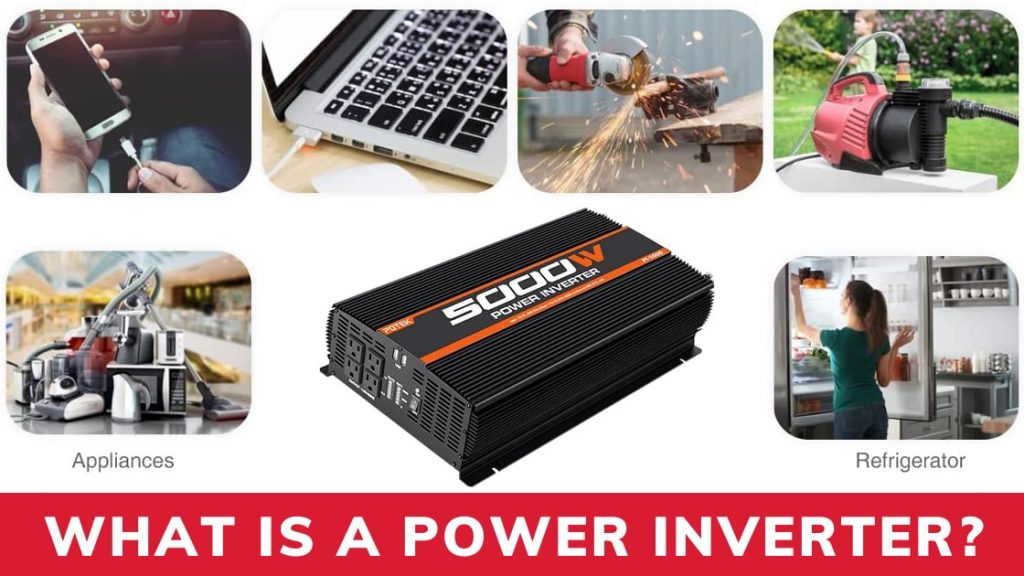A power inverter is a great solution when you don’t have access to a power grid or in the event of a blackout. You can use it for a myriad of things when tailgating, camping, or offshore fishing.
So, what is a power inverter? We don’t have to dig deep into its inner workings. Yet, it’s important to know the basic functions, benefits, and specifications if you are buying one.
What Is A Power Inverter?
A power inverter is a power electronic device. It converts direct current (DC) to alternating current (AC). It does not generate any power but derives power from a DC source to power most consumer electronics.
You can use a power inverter for a wide range of applications at home. It is especially useful as an emergency home backup power when there is a power outage.
For instance, a power inverter can draw power from a car battery (with the engine running). Then, it converts the current and supplies power to many household appliances.
You can use a power inverter for a TV, computer, power tools, light fixtures, kitchen appliances, and many other electronics.
The runtime of a power inverter depends on the power source, and the amount of power pulled out by the appliances. The more added electronic devices, the more power lost and thereby shorter runtime.
An inverter can operate with a single battery (either 12V or 24V) or several batteries connected in parallel (to boost the capacity and the operating time).
Since battery power will deplete, you need to recharge your inverter via a battery charger plugged into an outlet. Other alternative sources of power are automobile motors, solar panels, gas generators, etc.
Related:
- What Size Of Inverter Do I Need? An Estimation Guide
- Top 8 Best Power Inverters For Cars – Best Buying Guide
- Top 5 Best Power Inverters For Home – Ultimate Buying Guide
- Top 8 Best Power Inverter For Semi Truck Reviews – Buying Guide
How Many Types Of Power Inverter?
There are two main types of inverters: true sine wave inverters and modified sine wave inverters.
Modified Sine Wave Inverter
Square sine wave or modified sine wave inverters are more affordable than true sine wave inverters. Yet, they apply to a limited list of devices.
They are cheaper if you only need to run light bulbs, kitchen appliances, and other low energy-consuming power tools.

Modified Sine Wave Inverter
However, modified sine wave inverters do not work well with sensitive electronics. They are incompatible with:
- Laptops
- Computers
- Laser printers
- Fax machines
- Medical equipment such as CPAP machines
- Sewing machines
- Devices with digital clocks or electric timers
Pure Sine Wave Inverter
Pure sine wave inverters entail higher upfront costs yet are more energy-efficient than their modified counterparts.
They are known for creating smoother and quieter electricity to run electronics and appliances. They also do not cause heat buildup or add stress to your equipment.

Pure Sine Wave Inverter
You can rely on a pure sine wave inverter for powering many appliances and electronics that otherwise do not work with their modified units.
For this reason, true sine wave inverters are more popular than modified sine wave power models since they are compatible with almost anything they are plugged in.
Size Of Power Inverter
Power inverters range from 100W to over 6000W, and the most common sizes are 1000W, 3000W, and 5000W. The size indicates the inverter’s capacity to supply power to a single high-wattage appliance or a host of electronic items simultaneously and without interruption.
The size of the unit you choose depends on the power consumption (in watts or amps) of the piece of equipment you want to run. You can check out this specification on the plate of the tool.

The Size Of Inverter Depends On How Much Power The Device Needs
Basic Ratings Of Power Inverter
A power inverter needs to meet two basic power needs of the appliance: surge power and usual power.
Surge Rating
Certain electronics, especially those running with electric motors, require a higher initial power to get started than operating. A power inverter should supply that power for a short period, usually in a few seconds.
Continuous Rating
Continuous rating is the amount of energy the inverter can generate continuously without overheating and abrupt shutdown. This rating is considerably lower than the surge rating. For instance, a water pump pulls from the inverter once it has started up.
Frequently Asked Questions
What Can A 1500 Watt Inverter Run?
1500 watt power inverters can supply enough power to run a 1200 watt device smoothly. Some common applications are 40W TVs, 100W fans, a host of 100W light bulbs, and an 800W refrigerator. If your household only needs to run these pieces of equipment, a power inverter of this size is more than ideal.
What Will A 6000 Watt Inverter Run?
A 6000W power inverter is quite heavy-duty and can serve as a backup source for power-hungry devices, including full-size water pumps or air conditioners, refrigerators, washing machines. It’s powerful enough to handle all types of electronics in the entire house or even small businesses.
What Is A Grid Tie Inverter?
A grid-tie inverter draws power from solar panels and converts the DC power to conventional AC power to supplement the main power. If there is enough energy from the solar panels, the grid-tie automatically delivers it to your home. This amount is subtracted from what the household appliances are consuming from the power company.
What Can A 200 Watt Inverter Run?
200W power inverters can provide a fair amount of continuous power for small appliances such as an electric stove, microwave, coffee maker. They are an ideal power solution when you’re on the go.
What Does An Inverter Do On A Boat?
Marine power inverters provide portable power for offshore fishing. They pull DC power from the battery bank and turn it into AC power.
This alternating power allows the user to operate household devices, such as computers and microwaves without connecting to shore power or shelling out the money for a generator.
The Bottom Line
We hope our article has helped you answer the question, “what is a power inverter” and provide basic information about this helpful device. If you’re buying an inverter, first consider where you’re going to use it, what kind of appliances you want to power, and their power consumption to make a better decision!
Further Reading:

